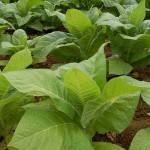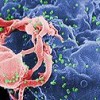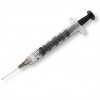Pharm Crops
 What if vaccines could be eaten instead of injected? Scientists began developing subunit vaccines in the late 1980s; these are vaccines which contain isolated pathogen proteins. It seems that proteins from viruses, bacteria, and parasites can trigger an immune response (are antigenic) even when the pathogens are not present. Furthermore, these proteins can be antigenic when eaten, which has led scientists to explore whether we can genetically modify food sources to create edible vaccines.
What if vaccines could be eaten instead of injected? Scientists began developing subunit vaccines in the late 1980s; these are vaccines which contain isolated pathogen proteins. It seems that proteins from viruses, bacteria, and parasites can trigger an immune response (are antigenic) even when the pathogens are not present. Furthermore, these proteins can be antigenic when eaten, which has led scientists to explore whether we can genetically modify food sources to create edible vaccines.
Dr. Charles Arntzen (Co-Director of the Center for Infectious Diseases and Vaccinology, The Biodesign Institute and Florence Ely Nelson Presidential Chair, Arizona State University) has spearheaded the genetic modification of plants to enable food crops to produce antigenic proteins. So far, he has experimented with bananas that protect against Norwalk Virus and potatoes that promote antibody production against Hepatitis B and pathogenic strains of E.coli. Dr. Arntzen cautions that vaccine containing crops are medicines, not food that would show up at a local grocery store, and would be regulated as pharmaceuticals. You can read an interview with Dr. Arntzen here.
Plant based, edible vaccines would not only make vaccine-aged children happier, they would also simplify global vaccine distribution. Currently, vaccines require refrigeration and skilled health workers to inject them. Fruits and vegetables can be freeze dried and pulverized into powders that would be heat stable: vaccine powders and pills could then be shipped around the globe without concern for a “cold chain” to preserve them, and could be eaten by populations without access to trained health workers.
The US government has also acknowledged that plant based vaccines would be faster and cheaper to produce than conventional vaccines, which are made in eggs over the course of several months. In early 2010, the research arm of the Department of Defense, the Defense Advanced Research Projects Agency (DARPA), awarded the Texas Plant-Expressed Vaccine Consortium a $40 million grant for Project Green Vax, an initiative to develop vaccines in tobacco plants. The Project’s first task is to show that tobacco can yield 10 million effective doses of the H1N1 vaccine per month. It would be incredibly ironic if tobacco redeems its reputation for being a public health scourge by becoming a public health staple.
| Print article | This entry was posted by Tedi Setton on April 19, 2010 at 2:25 pm, and is filed under DNA Interactive. Follow any responses to this post through RSS 2.0. You can skip to the end and leave a response. Pinging is currently not allowed. |


